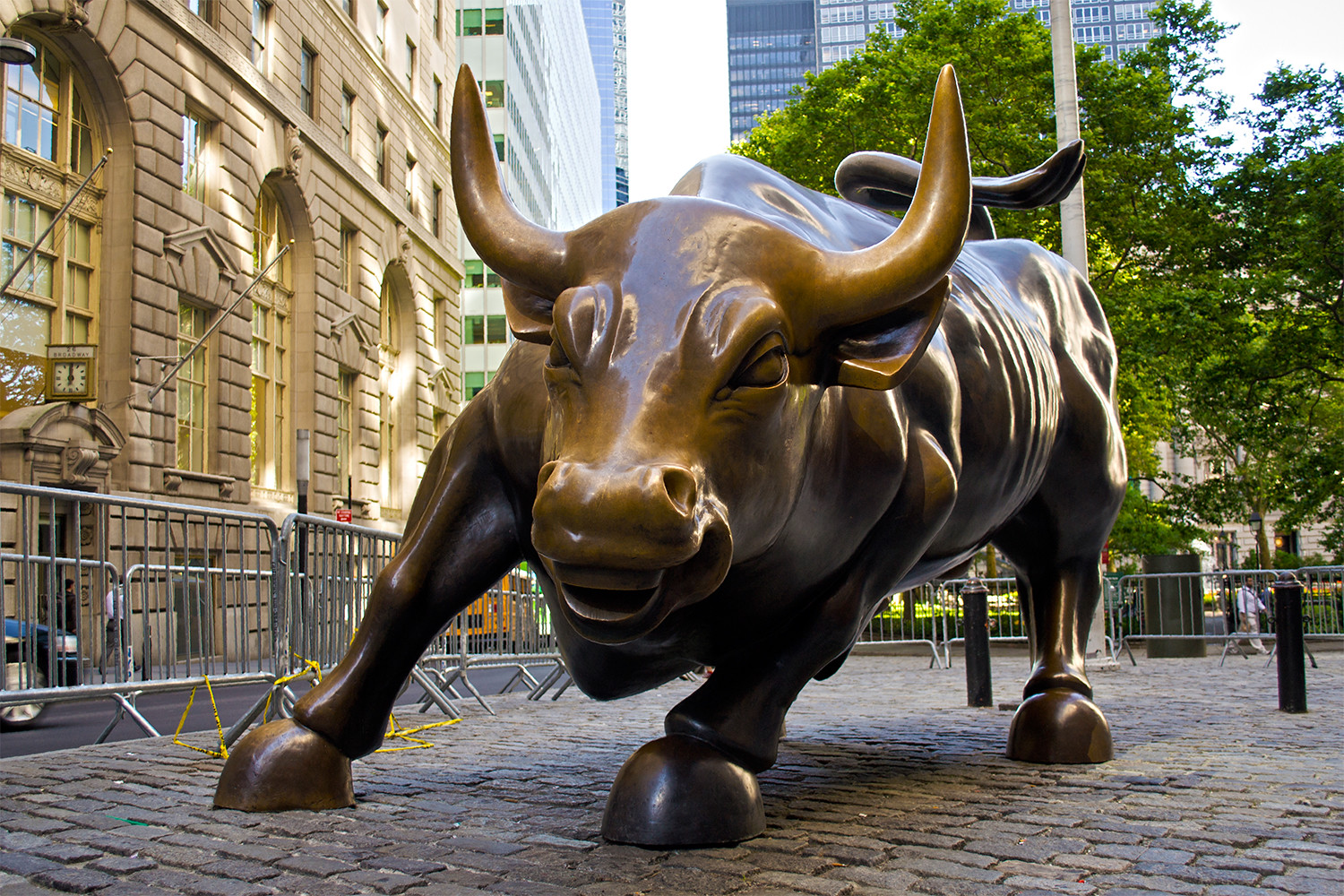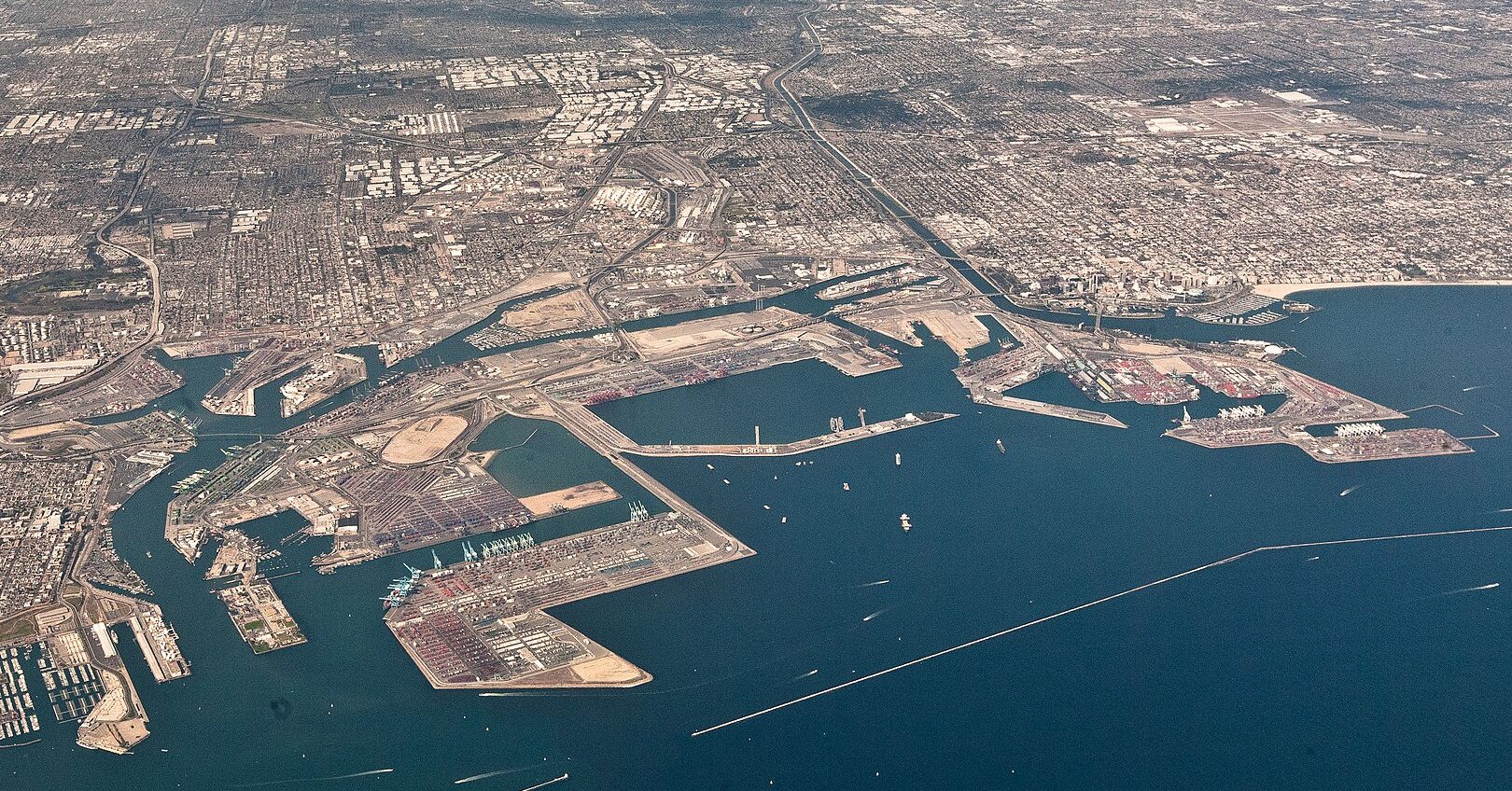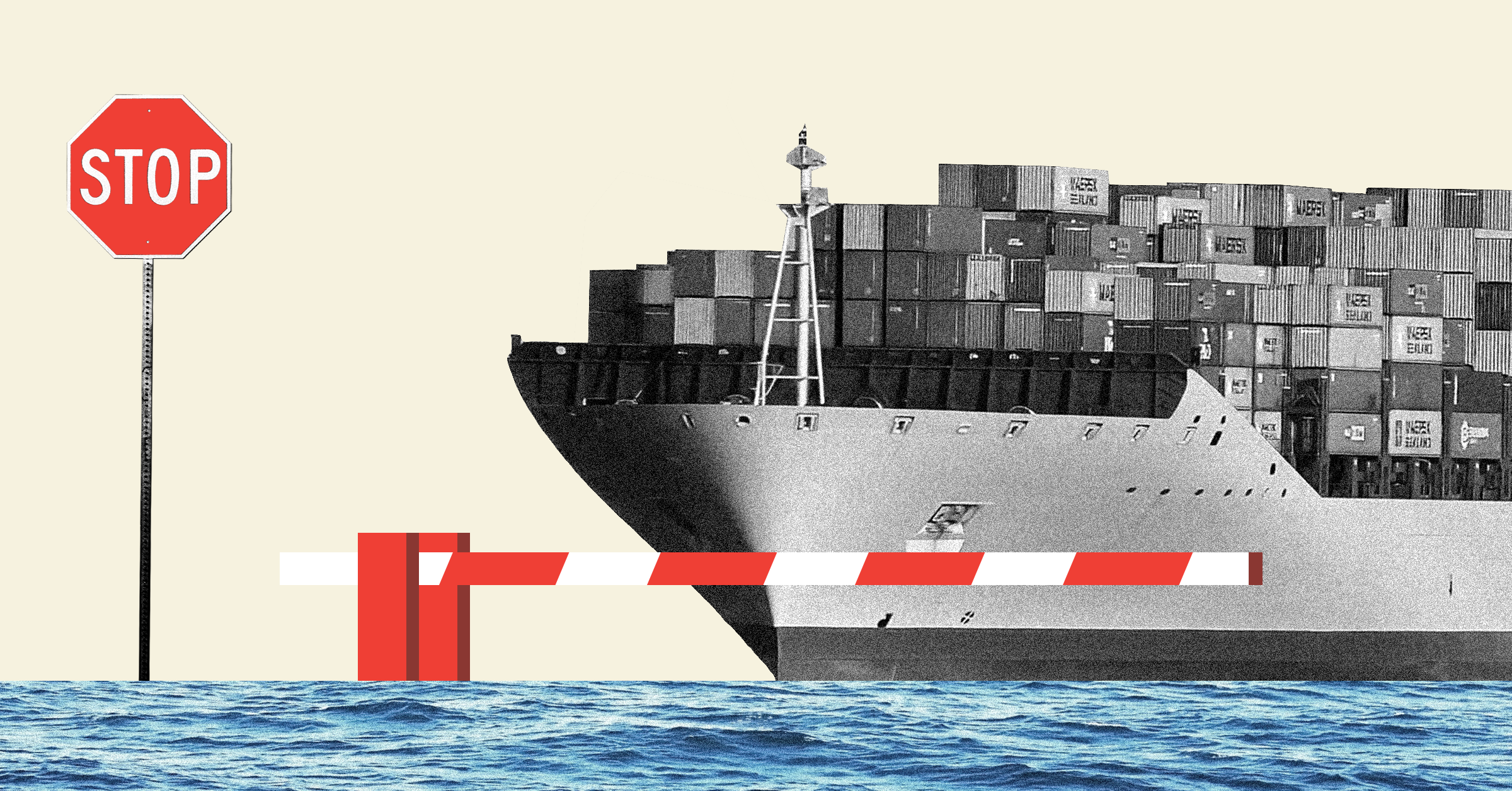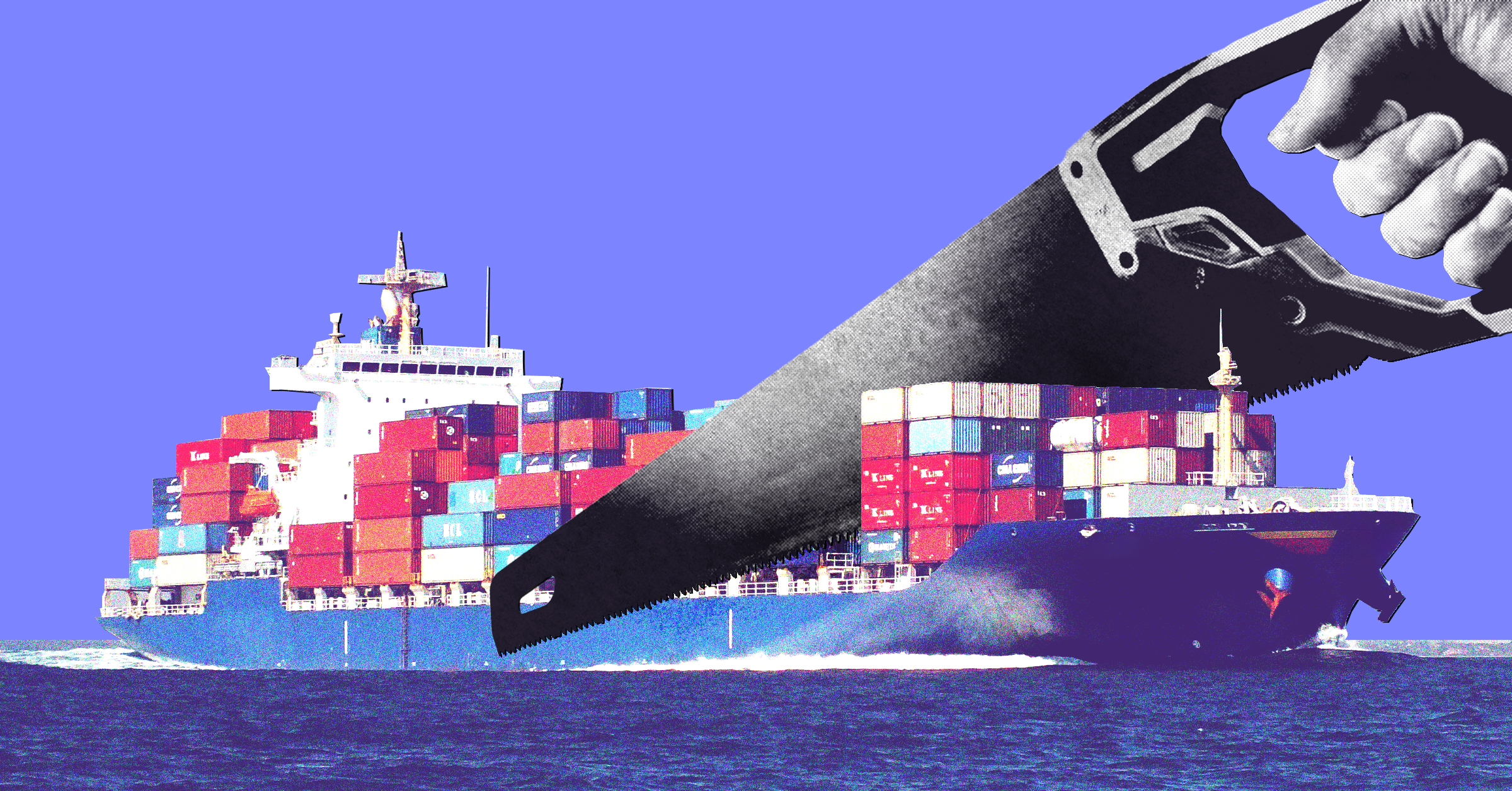The coronavirus epidemic has sent global markets into a meltdown. Mass infections have already thrown the healthcare systems of many countries into crisis; it seems like it’s only a matter of days or weeks before the U.S. healthcare system is overwhelmed.
Our current moment is one of acute emergency, and DSA is organizing across the country to respond to a quickly worsening health crisis. (And DSA members should be sure to join Thursday’s organization-wide emergency call to help us coordinate this response.) But the fallout from the crisis is certain to echo for years, and we’re almost certainly headed towards a major economic recession or depression.
While cities go on lockdown, millions of workers have already been laid off or seen their hours reduced. This downturn will become more severe as laid off workers struggle to pay their bills, overall market demand plummets, and businesses across the country file for bankruptcy or shutter their doors. A recent analysis from Moody’s Analytics reports that over 80 million jobs are at high or moderate risk. And the crisis is likely to spread throughout the global economy. Contrary to what many politicians would have us think, global financial markets have only become riskier and more overleveraged since the 2007-2008 crisis. The world market has seen an explosive and virtually unregulated rise in shadow banking. In many ways, the practices that led to our last financial crisis are still the norm, and it’s anyone’s guess whether proposed emergency measures will be enough to keep that system from collapsing in on itself.
Some socialists have greeted this news of a major economic crisis with anticipation, seeing this as the beginning of a long-awaited rupture with capitalism. But “weeks where decades happen” are just as likely to be setbacks as steps forward. We need to be sober about the prospects for socialist organizing during a prolonged recession.
Sasha Lilley makes this case in her book “Catastrophism”: “Periods of intense working-class combativeness in the United States have tended to coincide with periods of economic expansion, not contraction and crisis.” Economic crises have occasionally led to radical social change, but more often they lead to a weaker labor movement and the scapegoating and demonization of people of color and immigrants. The status quo during the Trump administration is one in which immigrants are locked in cages, the demonization of Muslims is met either with indifference from the center or escalating hate crimes from the Right, and anti-Black racism and anti-queer prejudice are expressed openly by politicians, police, and religious leaders.
We should all be concerned about the possibility of the coming financial crisis inflaming these reactionary attitudes and a continued offensive by the far right, and we should prepare ourselves to push back against racist scapegoating and xenophobia.
What Does This Mean for the Socialist Movement?
If DSA meets this recession flat-footed, it’s entirely possible that much of the work we’ve done together over the past few years will be undone in a period of deep suffering and nationalist backlash. While DSA has grown in size and influence, the organization is ill-prepared for a 2008-style crash. We have grown during a period of relative economic stability and societal openness towards our ideas. Since many of us joined after Bernie’s 2016 run, we have seen low overall unemployment and a relatively tight labor market, an upsurge in union activity and class struggle, a large and solid core of activists within DSA who often have a lot of free time and relative stability, a federal government embroiled in partisan gridlock, and a handful of left-wing elected officials like Alexandria Ocasio-Cortez willing to challenge neoliberal orthodoxy. It’s likely that a new crisis would dramatically alter many if not all of those conditions.
But in addition to the sizable danger, crises lay bare some of the very worst contradictions of capitalism and create an opportunity for socialists to agitate and organize. A crisis shakes working-class people’s faith in the current economic order. During the recession a decade ago, polls consistently showed Americans angry at and distrustful of economic elites. Some polls from the early days of the crisis showed a high level of support for nationalization or government takeover of big banks. In the months after the collapse, center-right and center-left media technocrats alike openly discussed the possibility of partial nationalization, as did officials in both the Bush and Obama administrations.
But this window was open only for a few months — a year and a half at most. Within an election cycle, anti-Wall Street sentiment had crystalized behind the billionaire-backed Tea Party movement and nationalization was off the table. Although Occupy would emerge in the years to come and the Bernie Sanders presidential campaign would eventually give a more explicit political articulation to anti-bank sentiment, the opportunities present in late 2008 and 2009 passed by without substantial change to the nation’s economic system. We can’t afford another missed opportunity.
The Crisis Last Time
The previous crisis took place during a period of total hegemony of neoliberal ideology. In 2008 and 2009, there were no prominent American leftists arguing in favor of nationalization. There was no popular publication with the readership of Jacobin that was willing to push for socialist politics. Freshman Senator Bernie Sanders was little known outside Vermont. Kshama Sawant was yet to be elected to Seattle’s City Council. DSA was a small group whose top priority was “speaking publicly about socialism.”
Because the financial crisis hit in the leadup to the 2008 presidential election, the de facto face of the Left for most Americans was Barack Obama, whose solution to the financial crisis was a complex, milquetoast, and clearly inadequate series of tax incentives and tweaks, mostly aimed at business owners. Then-candidate Obama gave a major speech in October 2008 in which he laid out his pathetic vision for recovery:
“I’m proposing to give our businesses a new American jobs tax credit for each new employee they hire here in the United States over the next two years. To fuel the real engine of job creation in this country, I’ve also proposed eliminating all capital gains taxes on investments in small businesses and start-up companies, and I’ve proposed an additional tax incentive through next year to encourage new small business investment […] I propose that we allow every family to withdraw up to 15% from their IRA or 401(k) – up to a maximum of $10,000 – without any fine or penalty throughout 2009 […] I’ve already proposed a mortgage tax credit for struggling homeowners worth 10% of the interest you pay on your mortgage and we should move quickly to pass it.”
Even before Obama took office, he signaled his support for the existing banking elite by filling his economic team with neoliberal deregulators and free-market acolytes like (former Clinton-era Treasury Secretary) Larry Summers and (former president of the New York Federal Reserve Bank) Tim Geithner, as well as keeping on Bush appointee Ben Bernanke as chairman of the Federal Reserve. (And it should be no surprise to see liberals like Kamala Harris and Nancy Pelosi continuing this tradition of Democratic Party politicians offering inadequate half measures in a moment of profound crisis.)
During the last crisis, the organized Left was too small and too weak after years of neoliberal attack to effectively make a very basic argument: that the banks and financial companies that caused this crash should be taken under direct public ownership and investment should be subject to democratic control and run for the public good.
What’s remarkable is that, despite very few people saying this, large numbers of American workers were in favor of that course of action anyway. This isn’t always the case — the prospects for nationalizing the financial sector under normal conditions are slim. When the economy is functioning as usual, the financial industry is among the places where capitalists are at their most powerful. Apart from its role in determining production, Wall Street has an enormous influence over politics. The financial industry has been the biggest donor to politicians for decades and in 2016 alone spent well over a billion dollars influencing the course of U.S. politics; it’s almost certain that the numbers for 2020 will eclipse that figure.
Outside of moments of crisis, capitalists are also able to leverage the threat of a capital strike, in which capitalists withdraw investment as a way of disciplining left-leaning governments. A capital strike is a major threat to the agenda of left-wing governments when the economy is operating normally. But at times of crisis, the financial industry requires massive interventions from the state to stabilize a flailing economy and bail out the banks, as we saw in 2008 and 2009.
It’s difficult to estimate a total value for the various bailouts, loan guarantees, and currency swaps that saved the financial industry from the previous crisis, especially since many of these programs were hidden from the public by the Federal Reserve when they were enacted. The total number is somewhere north of $15 trillion, possibly as high as $29 trillion. (For comparison, the yearly GDP of the United States is around $19 trillion.) Without those interventions, the recession would have been considerably more severe and many of the key firms that make up the banking industry would have gone under. Firms had no bargaining power in the wake of the financial crisis and no choice but to take what the U.S. government was offering them. Luckily for them, neoliberal economics were hegemonic and both the Bush and Obama administrations were committed to returning the financial industry to the status quo with an absolute minimum of disruption. We have to make sure that doesn’t happen again.
What Should DSA Do?
Over the coming months, the Coronavirus response will likely consume much of DSA’s attention and resources (and for good reason). But the coming financial crisis is likely to outlast the health crisis. As the federal government scrambles to bail out the financial industry, bank nationalization will emerge as one option of many.
But the nationalization of the financial industry won’t happen without a mass movement. DSA needs to start laying the groundwork of that mass mobilization and needs to be clear about what it means by nationalization, similar to the clarity of our five principles of Medicare For All. We should leave no doubt that when we say nationalization, we mean long-term and ongoing public ownership of the financial industry, subjecting the functions of that industry to democratic control, and running it for the public good and not for profit.
Concretely, DSA must be a leader in the fight for financial industry nationalization if that demand is going to get any further than it did in 2008. DSA’s National Political Committee should immediately adopt financial industry nationalization as an official DSA position and begin promoting that position. A particularly strong overview of nationalization is Thomas Hanna’s proposal for The Democracy Collective. Hanna has continued to make the case for nationalization in clear terms while leaving some of the specifics open-ended.
DSA’s NPC could choose to adopt this proposal exactly as written. Or DSA may want to explicitly call for a nationalized financial industry to be used to address racial and gender inequality, to decarbonize energy production, and to rebuild a healthcare system pushed beyond its limits by COVID-19.
Whichever form DSA’s leadership chooses, the organization should begin to use its spokespeople and social media to make the case for nationalization. DSA should identify members and allies who are confident speaking in favor of nationalization and arrange public events with those speakers. And DSA should include material about financial industry nationalization in its educational materials, including general materials about the financial industry, historical materials about the 2008 crisis, and materials about what nationalization could look like.
At least initially, much of this work might find a home within DSA’s campaign around the Green New Deal, where the call to “democratize control over major energy systems and resources” could be expanded to incorporate democratizing control over the financial industry. Or it might fit as part of the organization’s messaging around the Coronavirus.
Then, if we find ourselves in a prolonged recession or further acute crisis, DSA will need to lead an escalating campaign. We could ask our handful of allied congresspeople to speak out in favor. The organization could arrange town halls, speaking tours, and rallies in favor of bank nationalization. DSA could mobilize its members to call their congresspeople and try to place editorials in socialist and mainstream media. Rank-and-file union members could organize in their unions and push organized labor to come out in favor of nationalization.
Once nationalization was a topic in popular conversation, DSA could organize targeted direct action and mass demonstrations. And it should go without saying: Bernie Sanders is the only presidential candidate who could be persuaded to go through with this. If we’re serious about nationalizing the financial industry, socialists need to continue to do everything in our power to build the movement around Bernie Sanders in the coming months to get him to the White House.
The most important political message in such a campaign would have to be that the only way out of the crisis will be through. Retreat is not an option. People, including ourselves, are understandably already concerned about their own well-being. We have to do everything we can to frame socialist policies as the solution. Working people need to be ready to stand together and discipline the financial system, rather than accept discipline from the financial system as the price of a promised return to the status quo. The financial industry is already looking for ways to profit from the current health crisis, and once the dust settles we can expect familiar calls for austerity from neoliberals and deficit hawks. Austerity led to the rise of the far right in Europe and the United States over the course of the previous crisis; we can’t afford a second round of retreat.
What Would Nationalizing the Banks Look Like?
Partial models for nationalization exist. The Bank of North Dakota, currently in its hundred and first year, exists primarily to finance farms, student loans, and home mortgages. It uses its profits in part to fund state-level social services, although it is not subject to much democratic oversight from the state. Norway’s Social Wealth Funds own a majority of Norway’s total wealth, although those funds focus more on distributing the fruits of production rather than directing the production and exchange of goods and services. Costa Rica’s Banco Popular features a 290-person workers’ assembly representing a variety of social and economic sectors which advises a board with four assembly members and three representatives from the government. The bank is mandated to balance a “triple bottom line” where “earning financial returns is placed on par with serving the environmental and social good.”
It’s here that nationalization could have its largest effect. The financial industry directs investment and determines which goods and services are produced and in what quantities. As J.W. Mason has argued,
“The financial system is also where conscious planning takes its most fully developed form under capitalism. Banks are, in Schumpeter’s phrase, the private equivalent of Gosplan, the Soviet planning agency. Their lending decisions determine what new projects will get a share of society’s resources, and suspend — or enforce — the ‘judgment of the market’ on money-losing enterprises.”
Private finance determines which firms have access to the money they need to continue operating, at what rates, and for how long. Finance increasingly determines the price of the housing stock and where (and for whom) new housing is built. Finance sets the direction for the capitalist economy and is where production and distribution are planned. Finance is the instrument through which the logic of capitalist production and exchange is enforced. But in deciding all this, the financial industry focuses solely on creating profit for itself.
A nationalized finance industry would be able to pursue different objectives.
During the current crisis, this would most likely mean directing investment so as to maintain the highest possible rate of employment and to avoid layoffs, evictions, foreclosures, slashed pensions, and losses to retirement accounts. It would also mean making sure that manufacturers were producing adequate supplies of respirators, gloves, masks, antiviral medications, and other medical supplies.
But the long-term possibilities of a nationalized finance sector are endless. And there’s precedent for using public ownership to pursue political objectives. When the United States bailed out the auto industry, the Obama administration used the discounted loans to force the automakers to meet higher fuel-efficiency standards. With a nationalized financial industry, we would have enormous leverage over all sorts of companies that could be used to address social inequalities. For example, after nationalization companies could be forced to close gender and racial pay gaps in order to secure investments. Companies like Eureka Holdings that buy up massive parcels of cheap real estate and fuel gentrification could be put out of business entirely, and the development of new housing stock could be pursued in a way that prioritizes building low-income housing without displacing existing working-class communities. Discounted credit could be extended for new home-buyers or for home loan refinancing applicants in Black neighborhoods that earlier were targeted for toxic subprime loans.
The possibilities are vast and, crucially, would be subject to democratic control. For the first time, decisions about where resources in the United States are invested would be the topic of democratic debate and decision-making. Unions, community groups, racial justice groups, and DSA could advocate for and organize around specific investments, and the entire field of economic activity in the United States would be subject to collective decision-making. Looking ahead towards a transition to socialism, a nationalized financial industry would limit capital’s ability to carry out a capital strike. Overall, these would be extremely fertile grounds for building the socialist movement.
This Time Can Be Different
The year 2020 is not 2008. We’ve come a long way since the last financial crisis, and Bernie Sanders is one of the biggest reasons why. In Bernie, the Left has a well known and highly respected leader who consistently and clearly identifies Wall Street as the chief enemy of the working class and responsible for economic catastrophe.
We can be certain that in the event of a crash or recession Bernie will agitate against the bankers and whip up popular sentiment against Wall Street. However, Bernie has been pretty clear that he favors “breaking up the big banks” over nationalization. This is among his weakest positions, and it is where popular sentiment could move far beyond the positions of his campaign. Happily, there are elements of the Left that are willing to make the case for nationalization. We’re lucky to have Jacobin, which has long pushed for the socialization of the financial industry. The People’s Policy Project and the Next System Project have called on the government to permanently nationalize the financial industry. And polls continue to show a high level of distrust for banks. The current moment is one of continued anti–Wall Street sentiment and could be a ripe moment for a pro-nationalization movement.
DSA needs to take the lead, and we need to take it now. We need to conspicuously, clearly, and loudly advocate for the full nationalization of the financial industry. That message will find a very receptive working-class audience during a prolonged recession and help us keep building the socialist movement in the face of an economic downturn — instead of letting the downturn threaten all the work we’ve done. We’re in a scary moment, and things are about to get very tough for all of us. And though we face long odds, if we could succeed in nationalizing the banks, we would be laying a strong foundation for economic democratization and taking a major step forward in our fight for socialism.




